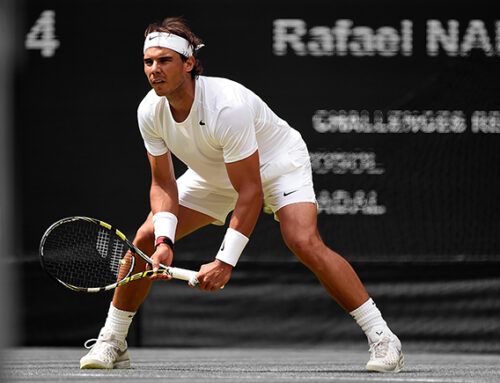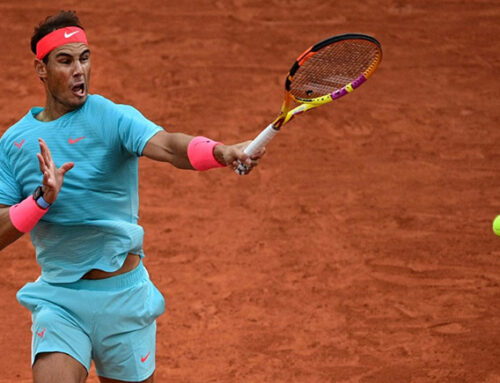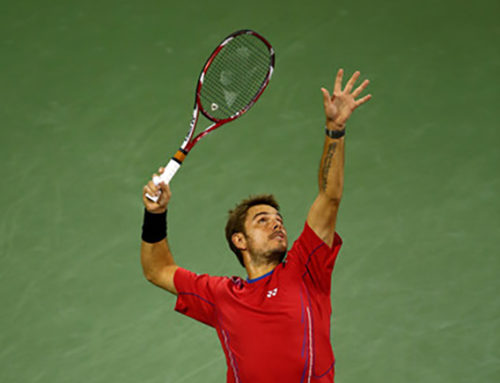Alex de Minaur – The Smartest Kid in the Classroom
The Jigsaw Puzzle
When breaking down tennis players, it can be helpful to look at them as jigsaw puzzles. Each stroke represents a piece of the puzzle, but the more limited the stroke the more oddly-shaped the piece. There are very few genuinely complete shots out there. Federer can do it all with his forehand, just like Nalbandian could do the same off his two-handed backhand. Even some of the greatest strokes have their limitations. If we take a shot like Novak Djokovic’s backhand, it is undeniably an incredibly effective shot. However Djokovic hits it a very particular way. His backhand isn’t a heavy topspin shot, but is exceptional in other ways. Djokovic has great direction control, and the ability to hit it equally well down-the-line and cross-court. What he can’t do is hit it with huge topspin, and he plays around that in his game.
The challenge of each player is to take the pieces they have and put together a cohesive picture of sorts. Some players, like Gael Monfils, have all the pieces and can’t quite make the picture make sense. Others scrape together odds and ends and somehow make it work. In large part the more astute players use patterns to confine points to the types of things they do well. This is fairly simple if you’re John Isner with an absolutely dominating serve – you get to play virtually all your service points on your own terms. When you’re Alex de Minaur, it isn’t quite so easy.
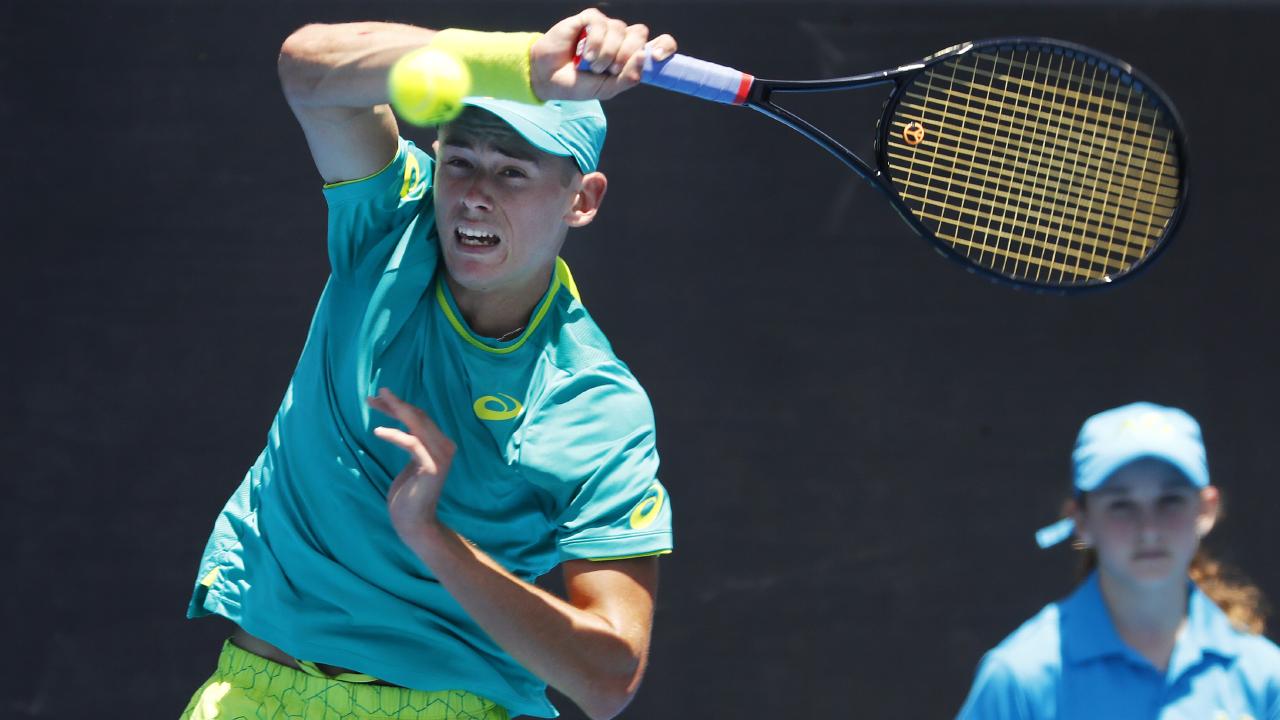
The Jigsaw Pieces
What pieces does the 18 year old Aussie potential phenom bring to the table? His first serve is very accurate with moderate pace. His forehand is relatively flat and penetrating, with shades of Sampras and Graf combined. Alex has great net instincts, solid volleys, and he’s fast. Very fast. However it’s not all roses in his still-developing game.
De Minaur’s backhand is very particular. It isn’t a bad shot per-se, rather it is just limited. Alex’s backhand is somewhat reminiscent of David Ferrer’s – a shoveling motion where he pushes through contact rather than striking the ball most of the time. The end result of this is that Alex is quite good at sliding the ball down the line, but struggles to get much angle or power on the cross-court ball unless he swings extremely aggressively – something he can’t do shot after shot without developing the technique further. Inevitably, de Minaur hangs many of his attempted cross-court balls towards the middle of the court with neither depth nor power – exactly the type of ball top-tier professionals expect to punish.
This makes Alex’s backhand a rather tricky shaped piece of the jigsaw. The shot he hits best with his backhand is also the one that is highest risk – the down the line. Unable to really pull opponents wide cross-court, this leaves de Minaur with the ability to use his backhand in an aggressive way only very sparingly. He can usually only hurt opponents with it when he has caught them off balance or by surprise.
As it turns out though, de Minaur isn’t just good at putting together the jigsaw puzzle. He is, especially for his age, exceptional at it. Alex de Minaur isn’t out there playing defensive, counter-punching tennis despite his relatively diminutive size. De Minaur is constantly attacking his opponents, and frequently finds a way to be on offense against players despite being outgunned in nearly every area of the game. How exactly does a wiry, 5’11 eighteen year old make deep runs in back-to-back ATP events – outclassing bigger, older, and stronger opponents along the way? By being the smartest kid in the classroom.
When Things Go Wrong
To begin with we must briefly put things in context – by a quick glance at when things go wrong for Alex de Minaur. We can do this by taking a look at a single point from his match with Ryan Harrison in the Brisbane International. Harrison is a typical ATP player – Big serve, big forehand and a decent if uninspired backhand. In real terms, Harrison holds more power off both wings and the serve. If de Minaur gets on the wrong side of the point, things can go wrong very quickly, as we will see.
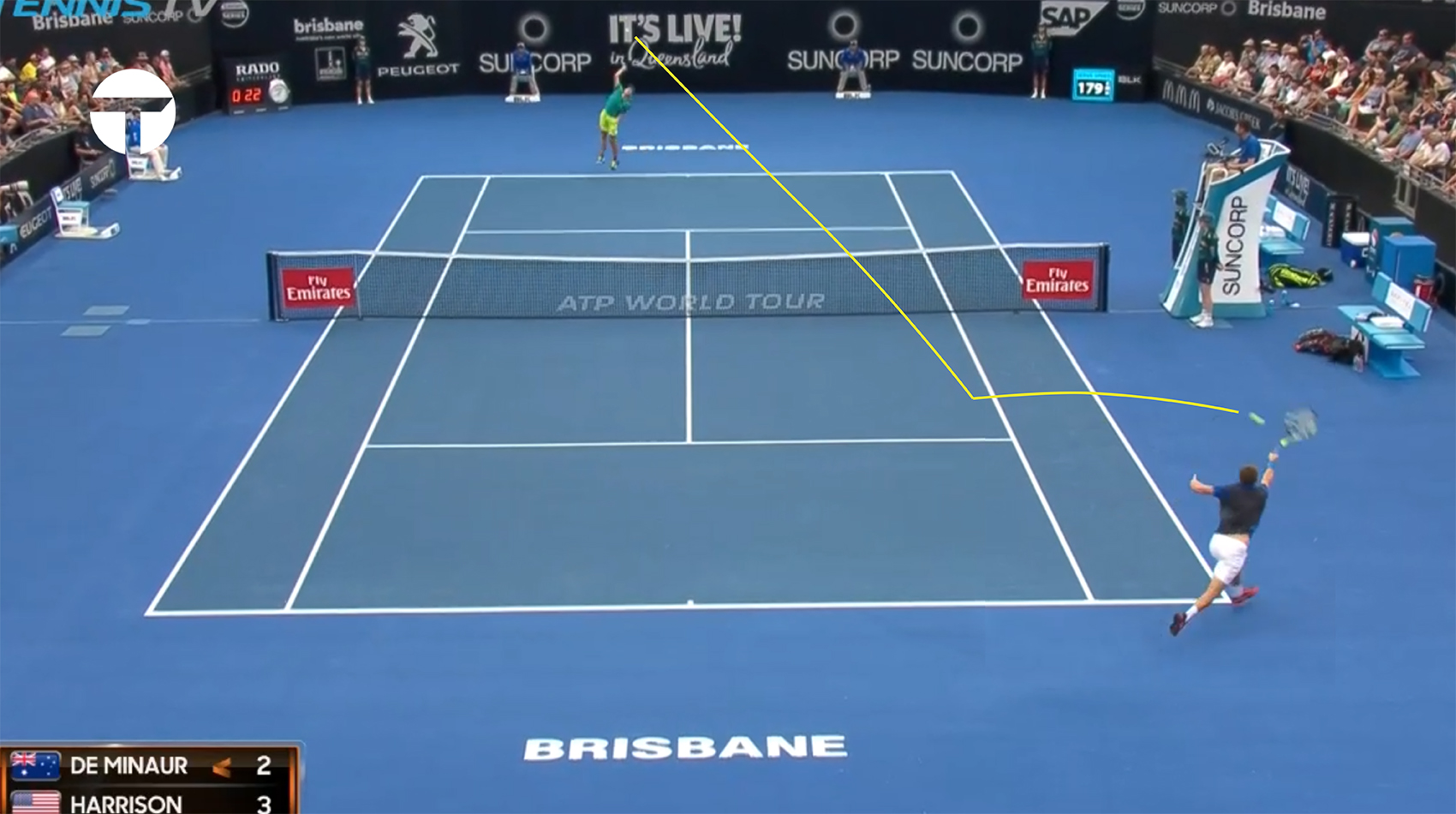
The point in question begins with a good first serve from Alex, one which gets him exactly what he wants – a forehand. Remember how we said Alex isn’t a passive player? He will look to use his forehand over and over again in order to control play and get forward into the net on his own terms.
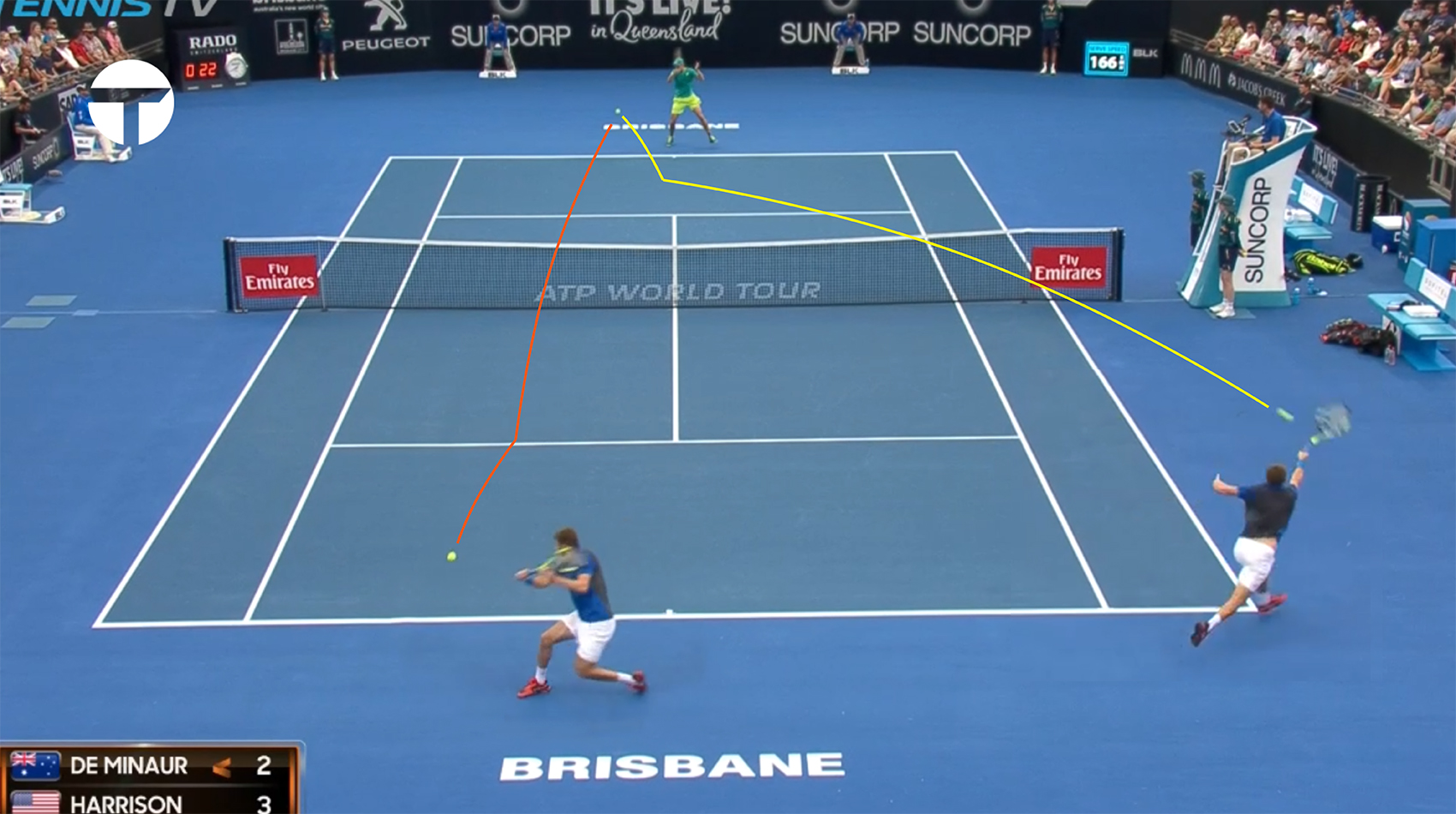
Having gotten the forehand he wants, Alex immediately gets to work, attacking Harrison’s weaker backhand side (the orange line). Harrison’s may be no Agassi or Nalbandian, but he isn’t a complete pushover on the backhand wing. Rushed and on defense, Ryan hits a smart ball here – a deep, cross court slice into Alex’s backhand (the yellow line). This is where a more physically imposing player with a more complete backhand stroke would keep the initiative, but Alex’s limitations show through a little.
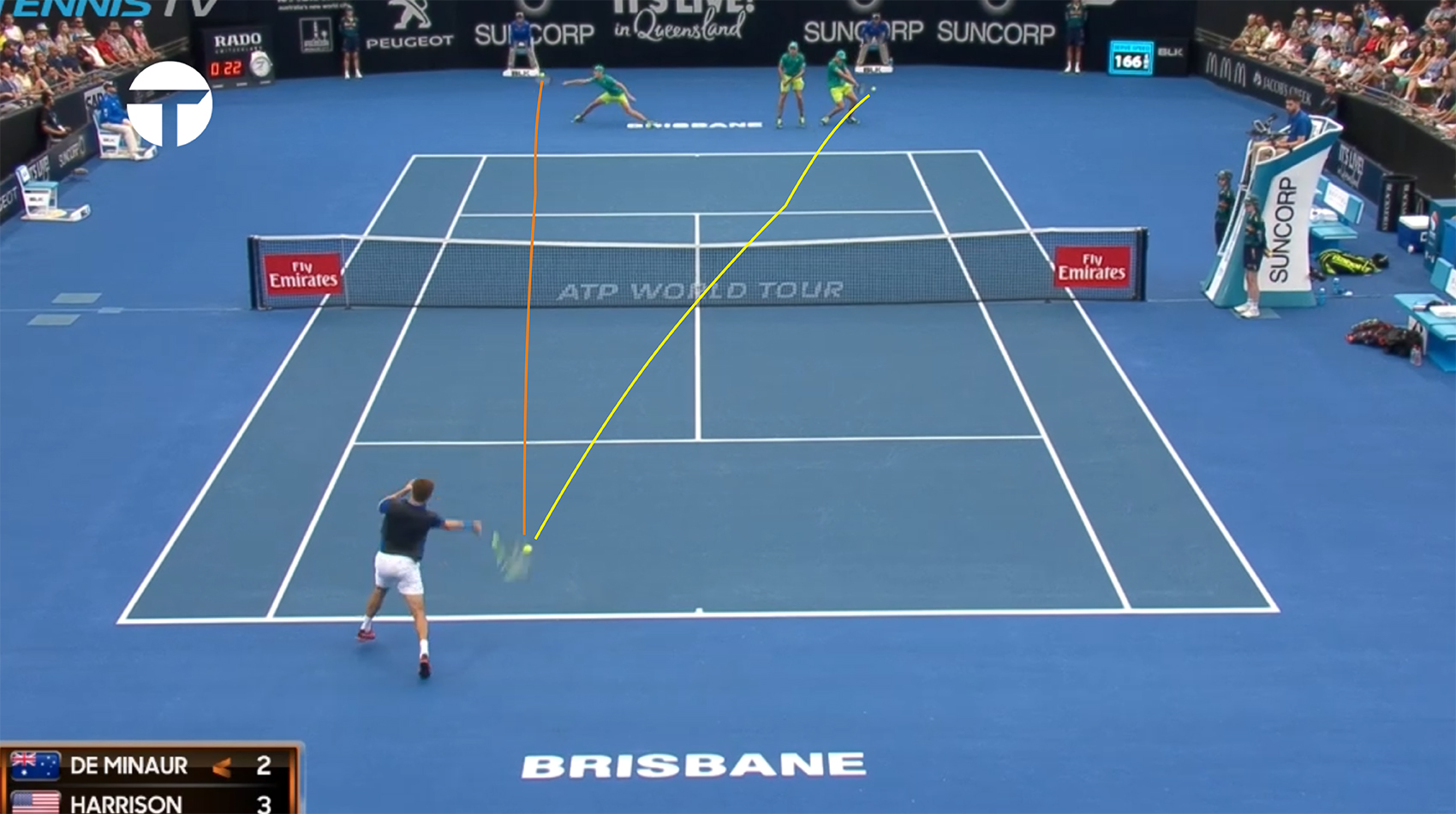
Alex’s response is a lackluster ball that Harrison is able to run around. Harrison may not have the best risk management on tour, but he does have a big forehand. Ryan unleashes one big shot inside-out (the yellow line). De Minaur is in too defensive of a position at this point to take the ball up the line, so he tries in vain to find Harrison’s backhand. The ball hangs towards the middle, and Harrison gets a second forehand from almost exactly the same position and takes the shot inside-in to force an error from de Minaur (the orange line).
The Backhand as a Weapon
The above point isn’t happenstance – it isn’t the result of an abnormally poorly struck ball from de Minaur in the same way that every player occasionally doesn’t catch the contact well. It’s a predictable outcome given the way he goes about the stroke. As mentioned earlier, most professional players (and needless to say most college and recreational players also) have similar types of holes. In a less astute player, this alone might be enough to anchor Alex outside the top 100. However de Minaur is extremely astute.
Part of what de Minaur does so well is embrace his backhand. Remember that it is just a stroke with some slightly unusual strengths and weaknesses. Alex has done an excellent job of using the backhand as a weapon. He has a good intuitive sense of his opponent’s positioning and movement, and uses this to anticipate when he can use the backhand down the line effectively.
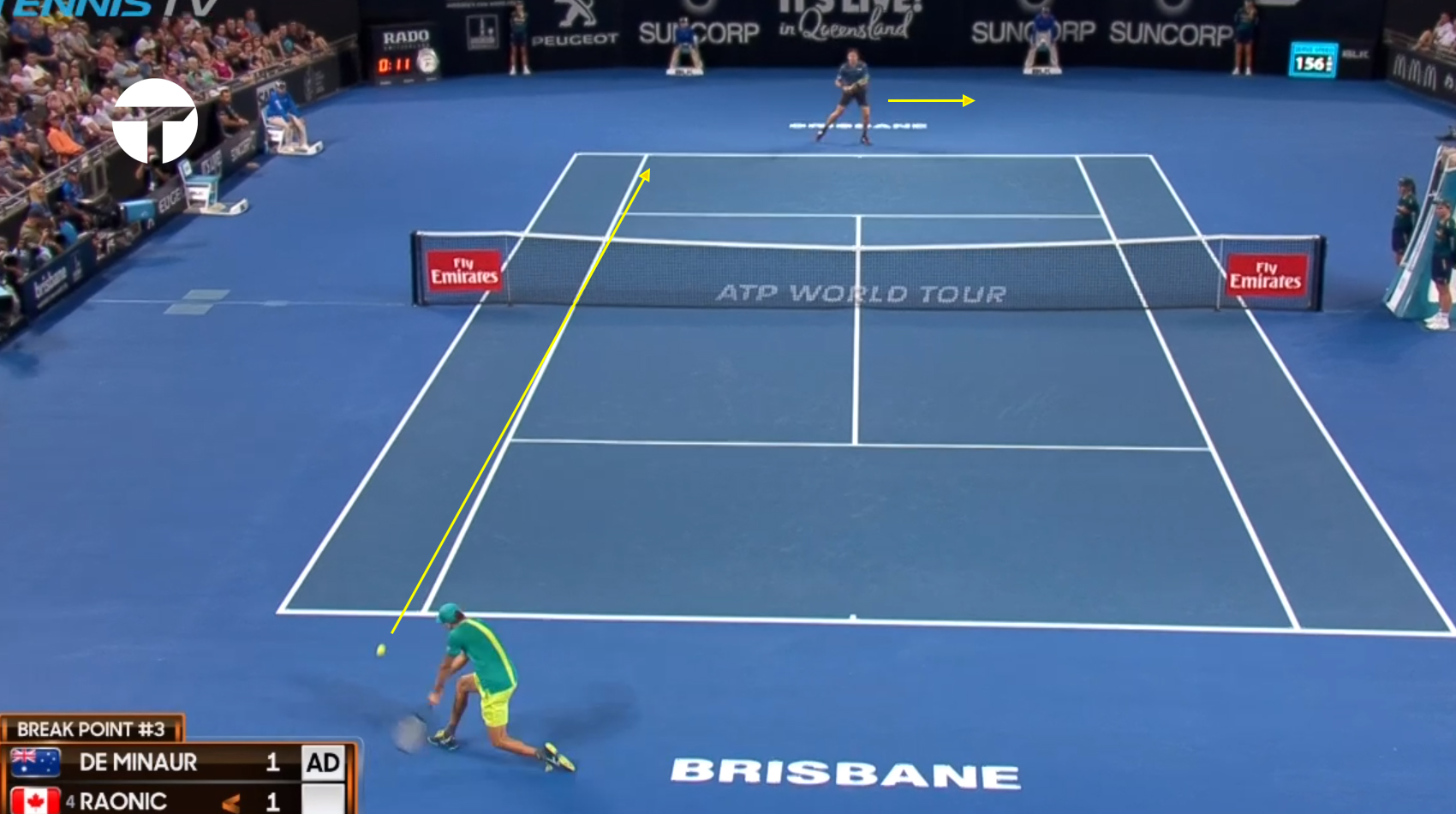
Taking this shot from his win over Raonic in Brisbane, we can see exactly how de Minaur uses his backhand as a weapon. Granted Raonic isn’t a great mover at the best of times, let alone when he’s on his way back from injury. However Alex hits this shot well and to great effect against far better movers than Milos. Milos’ backhand isn’t bad, but he definitely likes to direct play with the forehand. In this situation, Raonic is anticipating a cross-court ball off the de Minaur backhand. Milos has committed his weight to his left because he’s a little out of position and he’s hoping for an inside out forehand. When Alex slides the backhand up the line, Raonic has no play on the ball. It is not a ball hit with much pace, but the timing of when de Minaur hits it is exquisite.
Shifting Play
Alex de Minaur may have Lleyton Hewitt as a mentor, but his style of play differs greatly from his fellow Australian’s. Where Lleyton was the consummate counter-puncher, Alex is far more pro-active in his play. De Minaur actively looks to dictate points with his serve and forehand. Indeed one of the most distinctive parts of de Minaur’s game is his willingness and ability to stay aggressive on the forehand side even in defensive positions. Alex moves forward to finish points without hesitation, and his net game is more than tidy enough to handle the situations he typically puts himself in.
This is all built upon the ability to hit forehands however. If one were to watch every match of Alex de Minaur during his runs in Brisbane and Sydney, they might notice something rather striking. De Minaur rarely hits two backhands in a row. Furthermore, de Minaur very rarely hits more than two backhands in any one point. Alex is very effective at shifting play onto his forehand, and then attacking relentlessly off that wing. He has an unusually well developed sense of risk management for a player of any age, let alone 18. Important to attach to that is the simple fact that when de Minaur hits three or more backhands in a rally, his odds of winning that rally go down fairly significantly. Again it isn’t that his backhand is a bad shot – it is simply that its strengths are relatively high-risk high-reward.
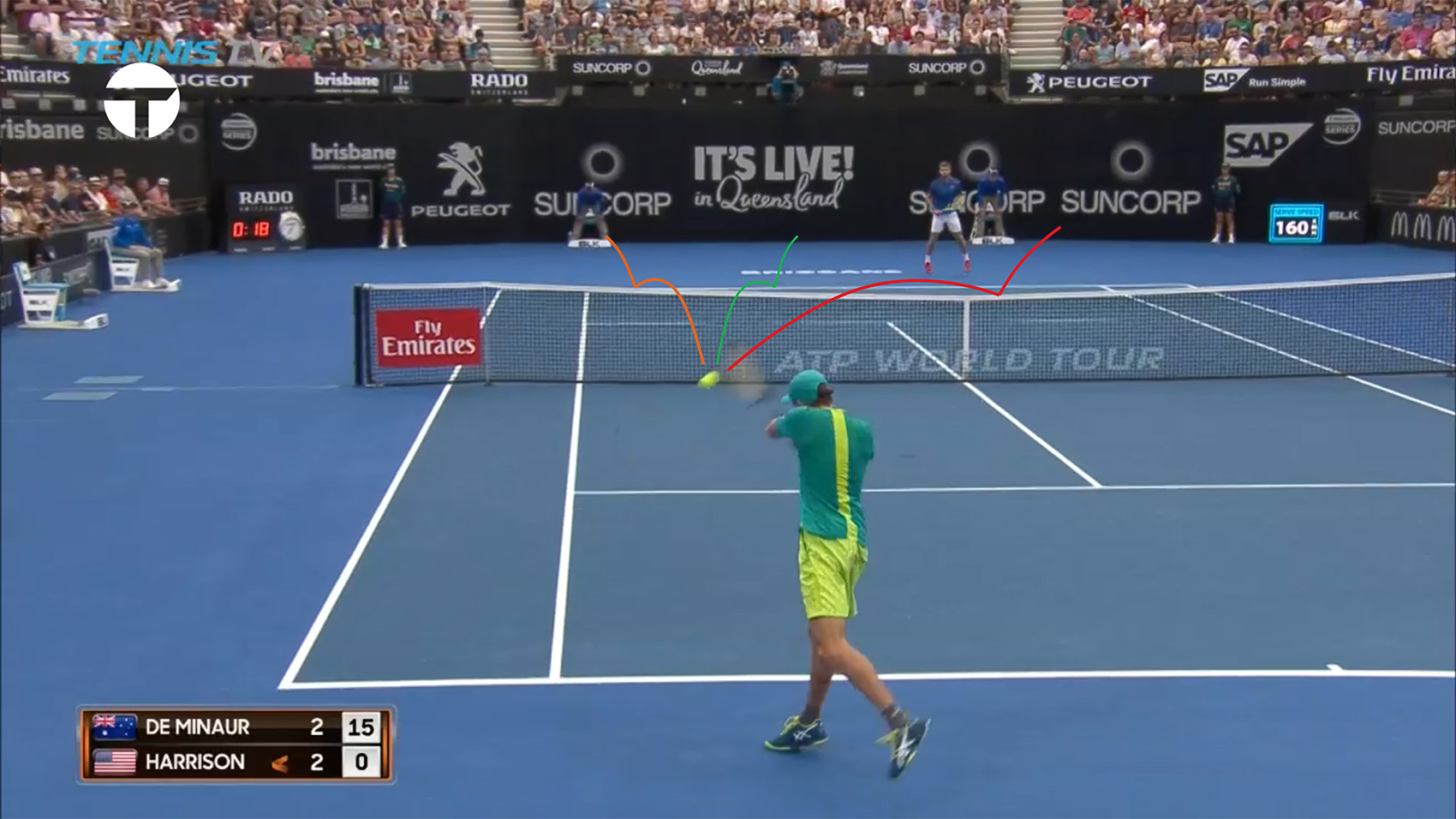
This image is from a backhand in de Minaur’s match against Harrison in Brisbane. The specific outcome of the point in question isn’t important – what it does do is give us a chance to examine Alex’s options off the backhand wing in a frozen moment. Harrison’s position in this image is a hugely important part of the context when we consider the choices de Minaur has available to him. Note that Ryan is in a firmly cross-court position from the ball. Harrison isn’t in transition – he is balanced and in a near perfect position. If de Minaur takes the ball cross court (the red line) then Harrison will likely get an inside-out forehand. All de Minaur will have done is literally given Harrison angle with which to attack Alex’s own backhand with Harrison’s biggest weapon.
Conversely, the down-the-line backhand is very high risk for relatively lower reward in this case. Unlike Raonic in the image earlier in the article, Harrison isn’t in transit. Harrison is balanced, and ready to move in either direction. Remember that de Minaur’s backhand isn’t big, and so he relies somewhat on guile and catching his opponent off-guard to hit the shot at its best. This brings us to the green line. This is a bread and butter ball for Alex. It’s low risk, and achieves something big – a high chance of a forehand (although not without a cost).
Making The Sacrifice
In chess there is an important concept of sacrificing a piece. The idea is to intentionally let your opponent capture a piece in exchange for an improvement in position that is worth more than the piece you sacrificed. Alex has transitioned this idea to the tennis court, and it forms a critical part of his ability to win matches. Let’s examine this idea in context!
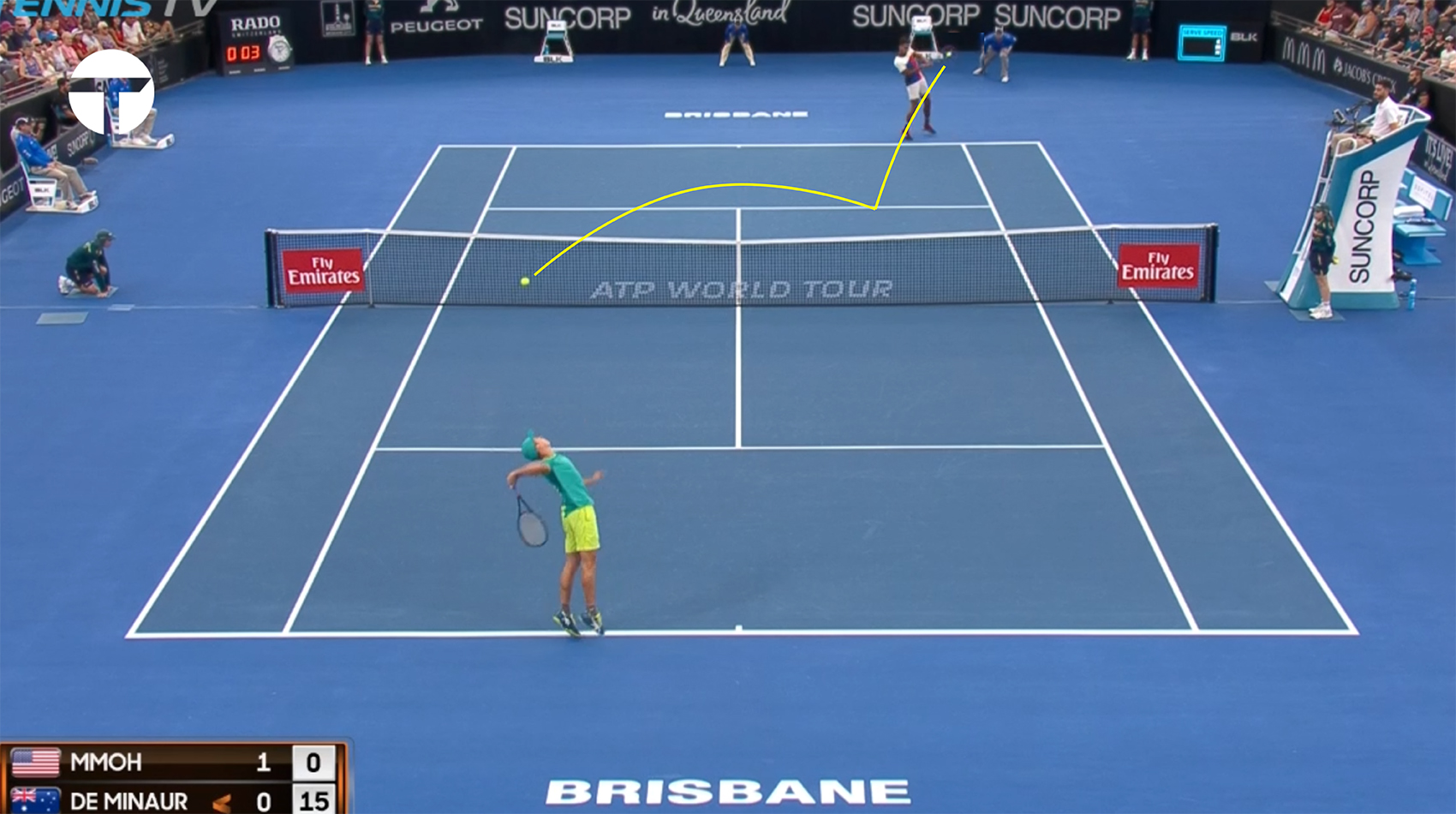
Michael Mmoh was another of de Minaur’s victims in Brisbane. Mmoh has a decent enough backhand, but his forehand is a powerful shot. Alex opens the point with a second serve to Mmoh’s backhand, and Mmoh is able to get the ball cross-court into de Minaur’s backhand.
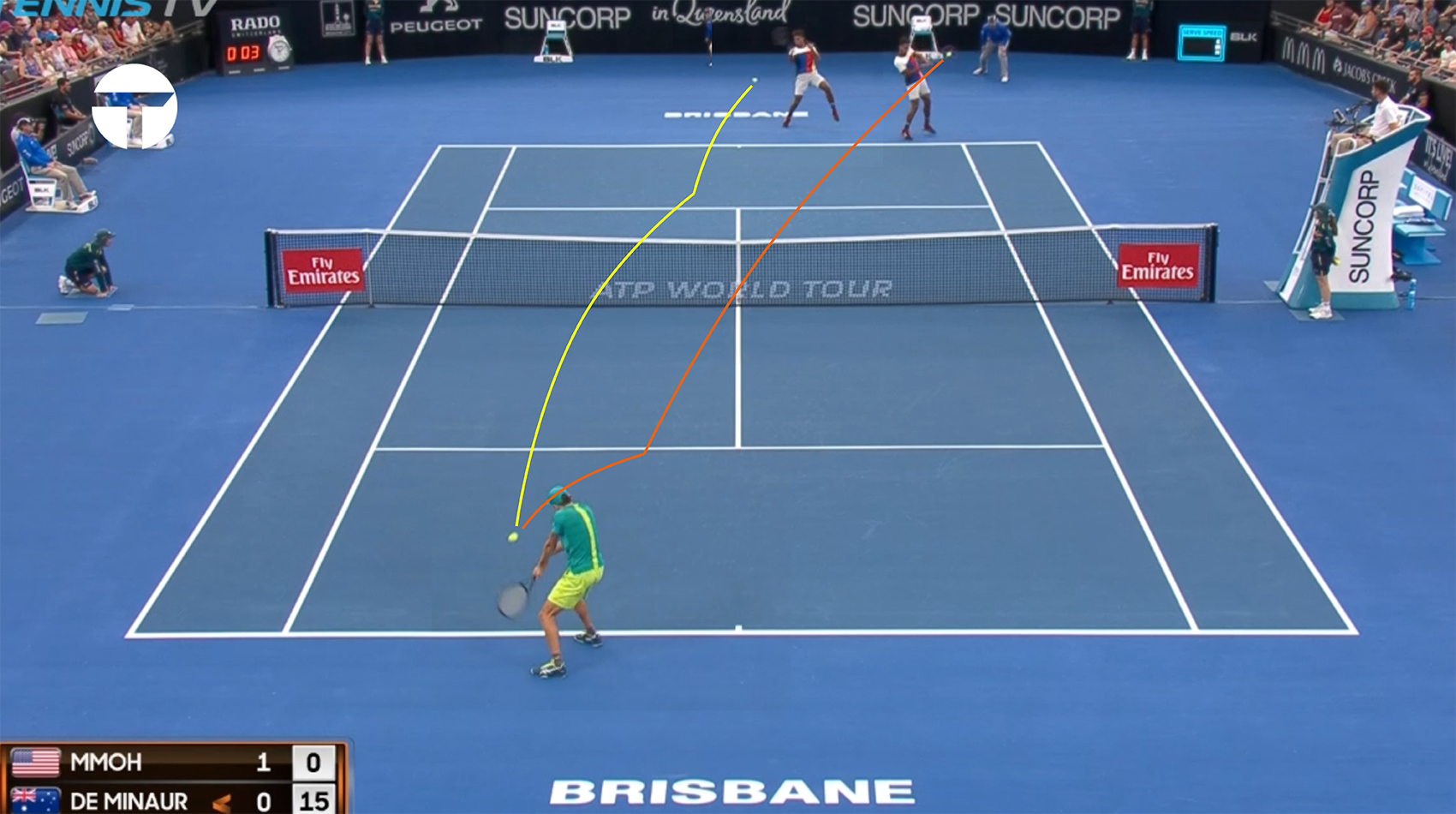
This is where the sacrifice happens. Alex isn’t balanced enough or ready to take this backhand up the line. Going cross-court traps play onto his backhand, so de Minaur plays a very intelligent shot when you look at the entirety of his game. De Minaur puts the ball straight into Mmoh’s forehand. He practically feeds his opponent the very shot Mmoh spends most of his matches trying to earn.
You might, for a moment, be fooled into thinking this is exactly what Federer was doing in the breakdown from a previous Tactical Tennis article. However the reality is this is something quite different. If we compare the trajectories of de Minaur’s backhand in this case with a typical one of Federer’s we can see a marked difference.
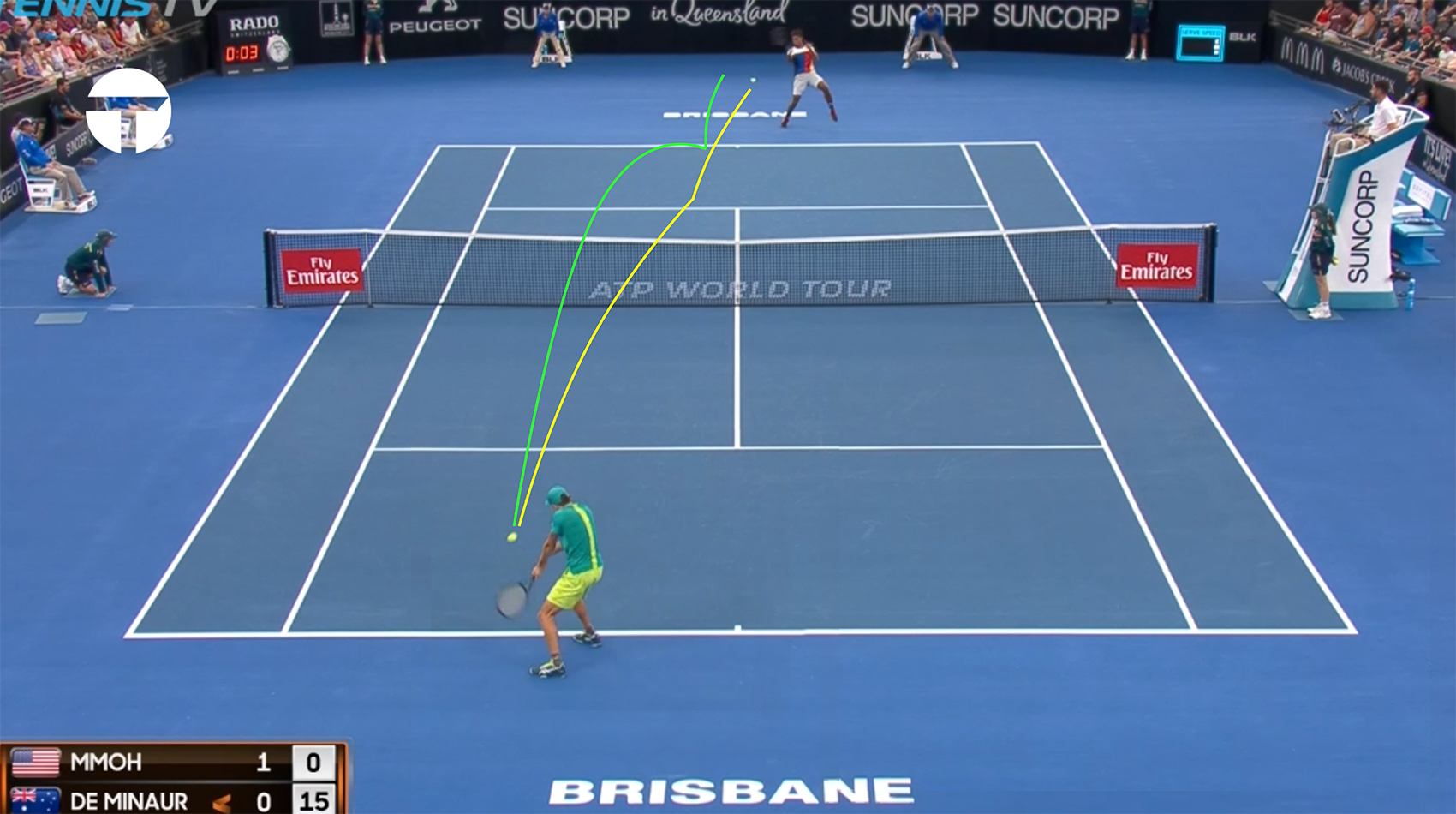
The yellow line is the trajectory of Alex’s backhand into the Mmoh forehand. The green line represents the trajectory of Federer’s backhand into Jack Sock’s forehand. The direction of the two shots is similar, but as we can see the depth and height of the two balls is very different. Alex doesn’t have a heavy topspin backhand – he certainly can’t consistently hit with the depth and spin that Federer can off that wing. So instead, he hits the ball shorter, and in doing so, invites Mmoh to attack him.
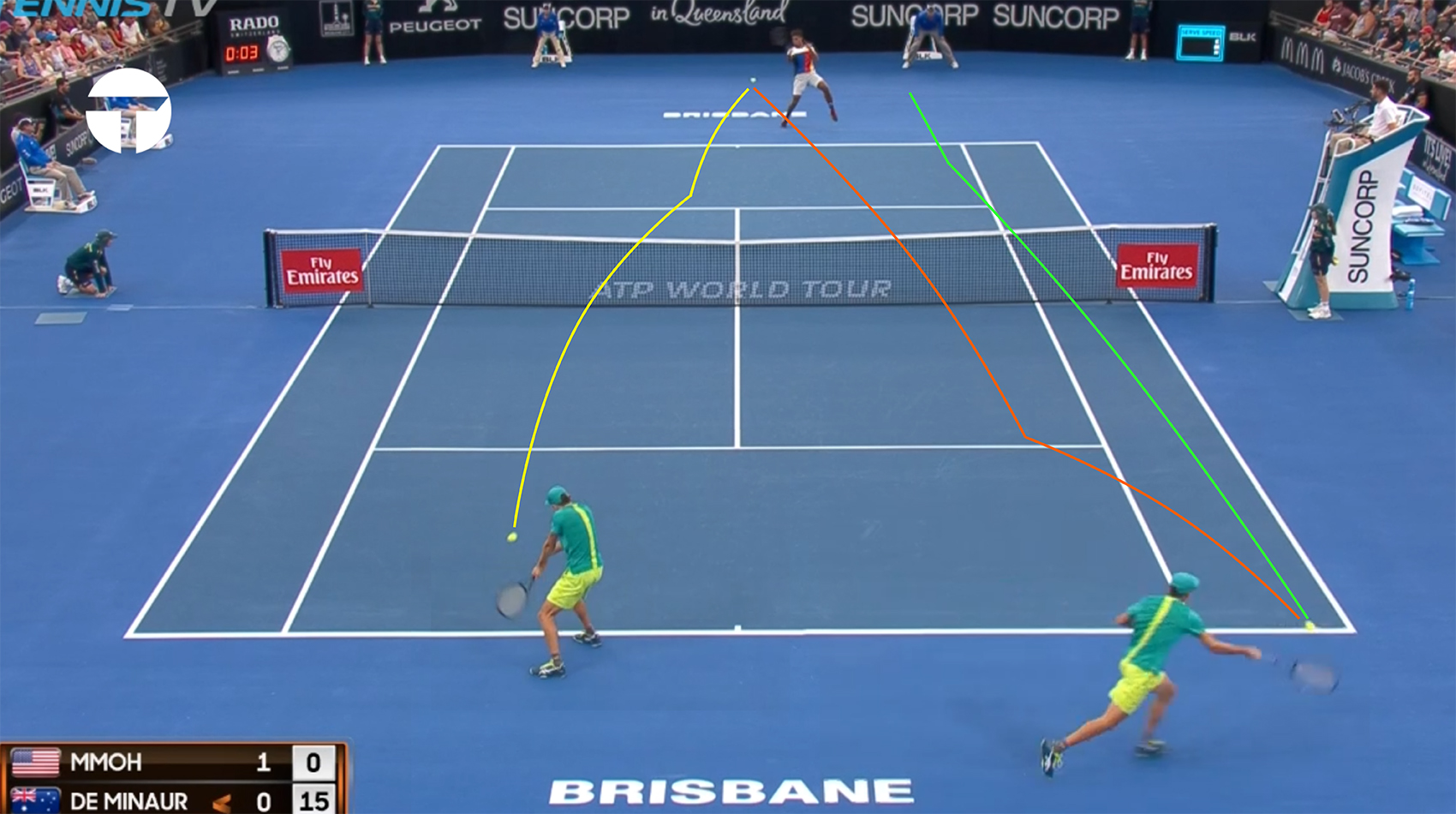
Where Federer was pushing Sock back, Mmoh is balanced and ready. For many players this would be a foolish gambit. There is, after all, a reason that only high level chess players are able to pull off sacrificing pieces successfully. However remember how Alex is fast? Not just that, his flatter forehand has a slightly later contact than most players which makes it very well suited to hitting shots on the run. De Minaur has great disguise on the run, and so he’s willing to give Mmoh an attacking opportunity in order to get a shot at his own forehand.
Mmoh hits a very aggressive, high quality ball and gets Alex firmly on the run. Indeed this is where many players would lose the point. But for Alex, this is exactly where he wants to be. Mmoh’s forehand is good, but de Minaur knew it was going there before Mmoh even struck it. After all, Alex invited the shot in the first place! De Minaur uses his speed, and the disguise on the forehand to rip a deep ball up the line. Mmoh has shifted his weight onto his toes, anticipating another attacking opportunity, and when Alex manages to put the ball a few feet from the baseline, he forces a short, soft ball in the middle of the court.
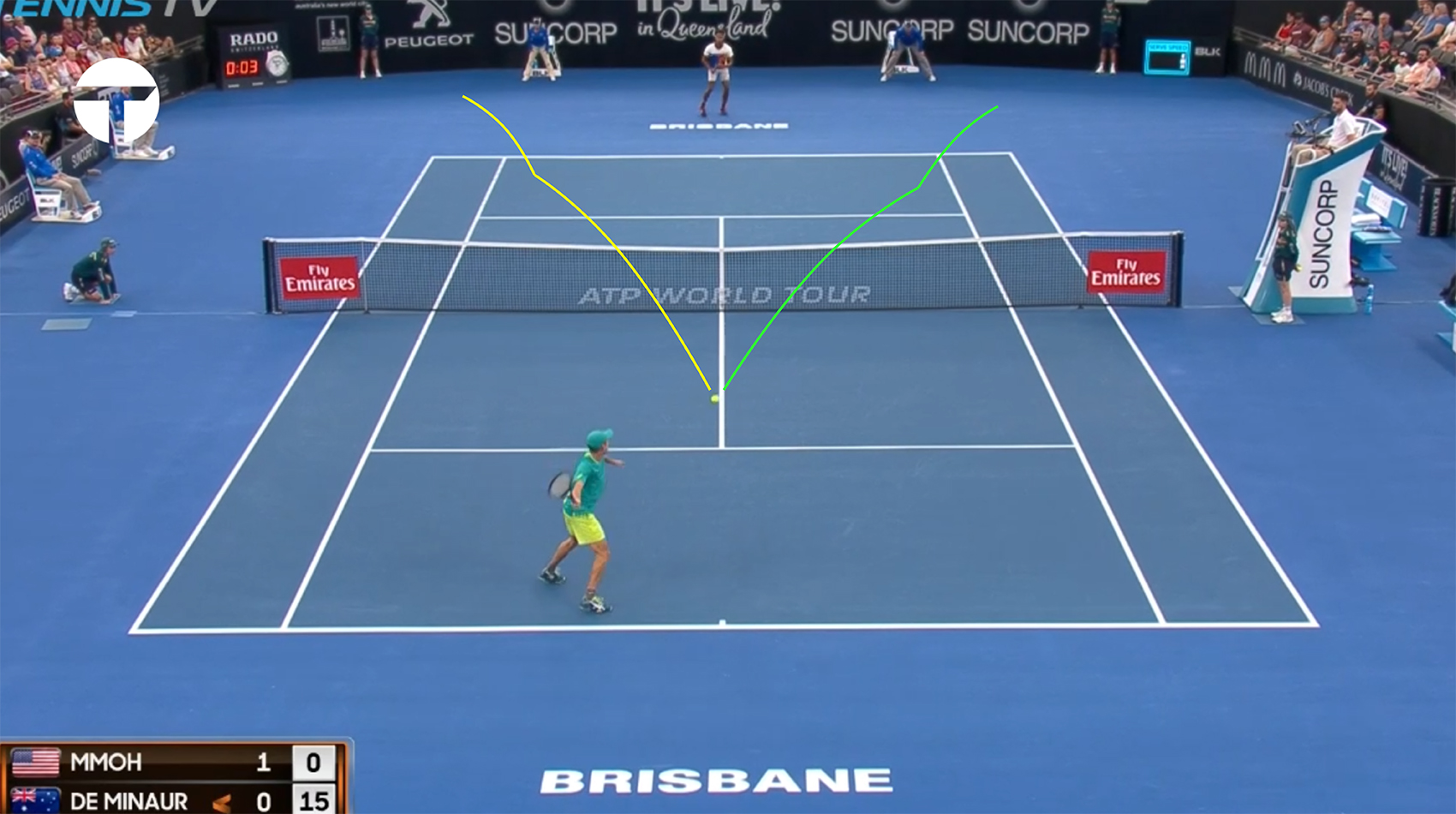
Mmoh is trapped now. Alex can take the ball in either direction – he has two completely viable finishing options with this forehand. De Minaur will win the point from this position virtually every time, and does so on this occasion. He has gone from a poor position to a winning one in two shots because he was willing to make a sacrifice.
Playing On Your Own Terms
There is one final point we will examine to further understand de Minaur’s subtle genius.
The sacrificial gambit against Mmoh might not seem so large – giving the opponent one good attacking ball that you anticipate in order to finish the point quickly in your own favor. But it can be used in more subtle ways also. Let’s take a look at a point de Minaur plays against Benoit Paire. In the images that follow, all of Alex’s shots are represented by the yellow lines, while Benoit’s are in orange. For those of you not familiar with Benoit Paire, the 6’5 Frenchman has a rather spotty forehand but one of the better backhands in the game. This is a dangerous matchup for de Minaur, because he cannot afford to get stuck in a cross-court backhand battle – a losing proposition in this case.
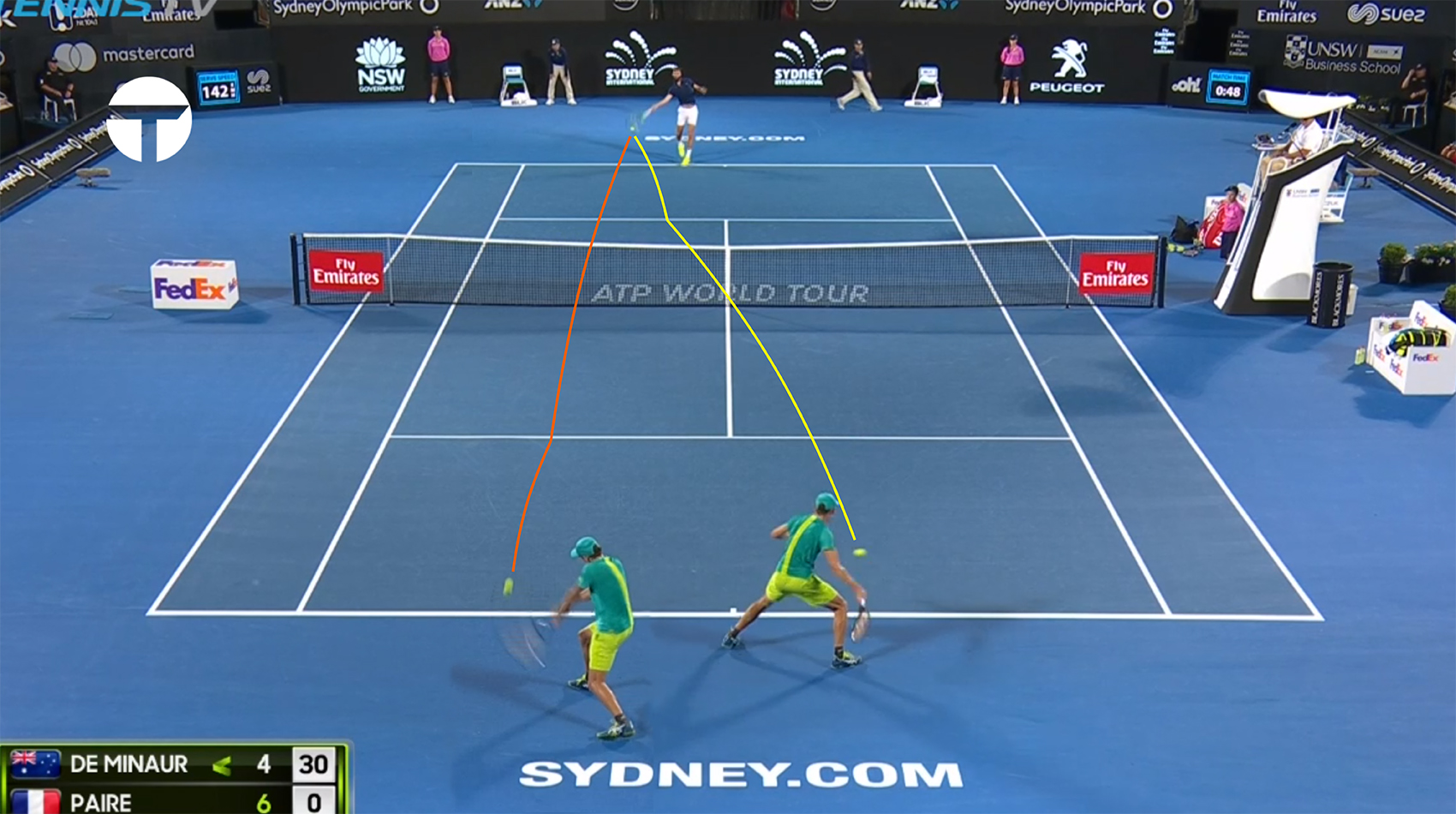
The point starts with de Minaur hitting a slightly defensive forehand into Paire’s forehand. Paire takes the ball straight into de Minaur’s backhand, most likely hoping for the cross-court ball so Paire can hit his own favorite shot. This is a position in which many pro players would absolutely punish Paire, but de Minaur isn’t ready to bite. Alex is willing to make the sacrifice again.
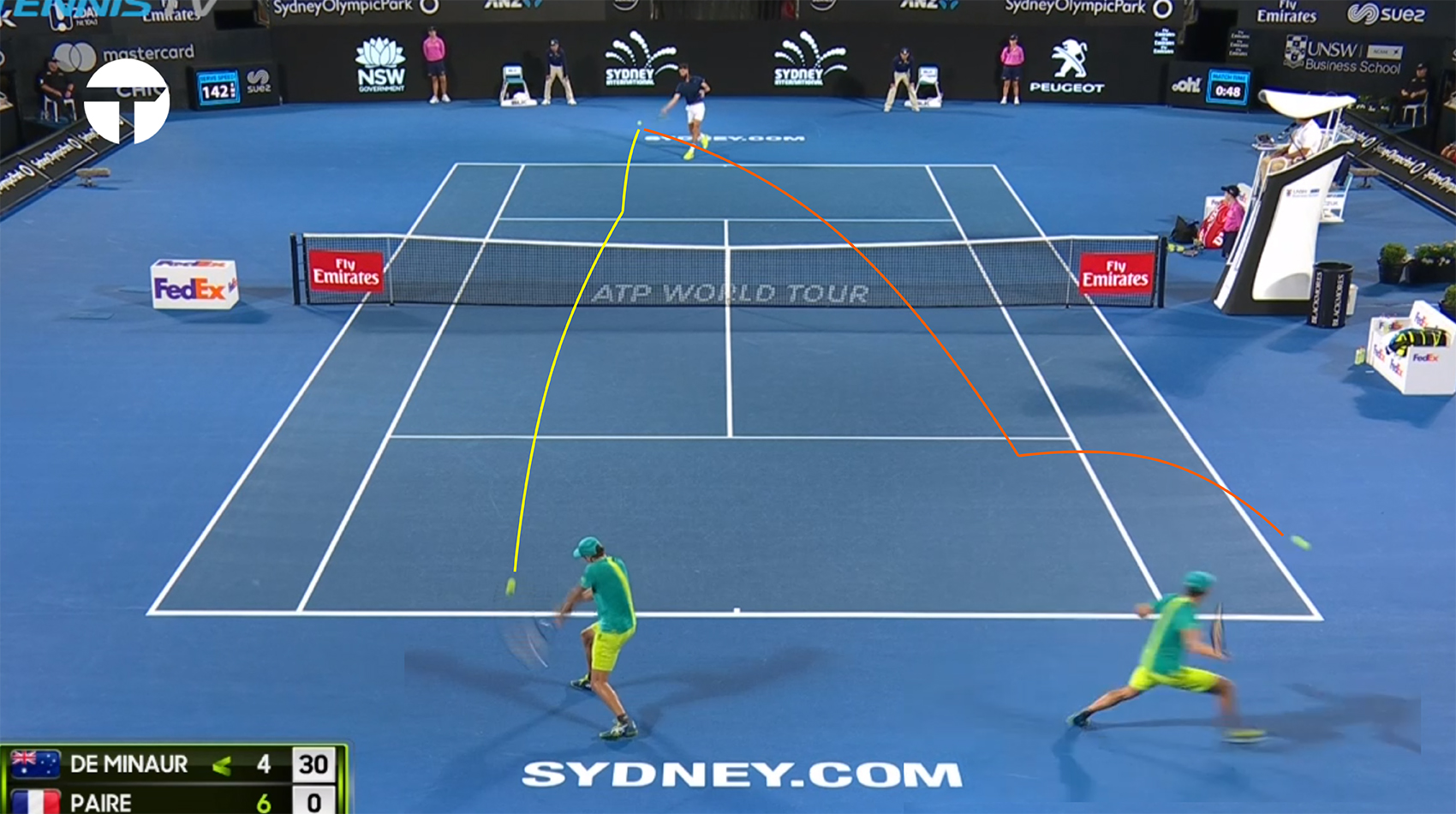
De Minaur slides the backhand straight back into Paire’s forehand. Indeed he literally hits it straight back to the Frenchman, who quite happily hits a punishing cross-court ball into the deuce court. Take a moment. Look at Alex’s position as he tracks this forehand down. Few players in their right mind would intentionally put themselves in situations like this. But, again, de Minaur is where he wants to be. Why? Because he doesn’t want a slugging match with Paire. He wants a running contest. Alex de Minaur wants to play Benoit Paire at something he does better than the Frenchman.
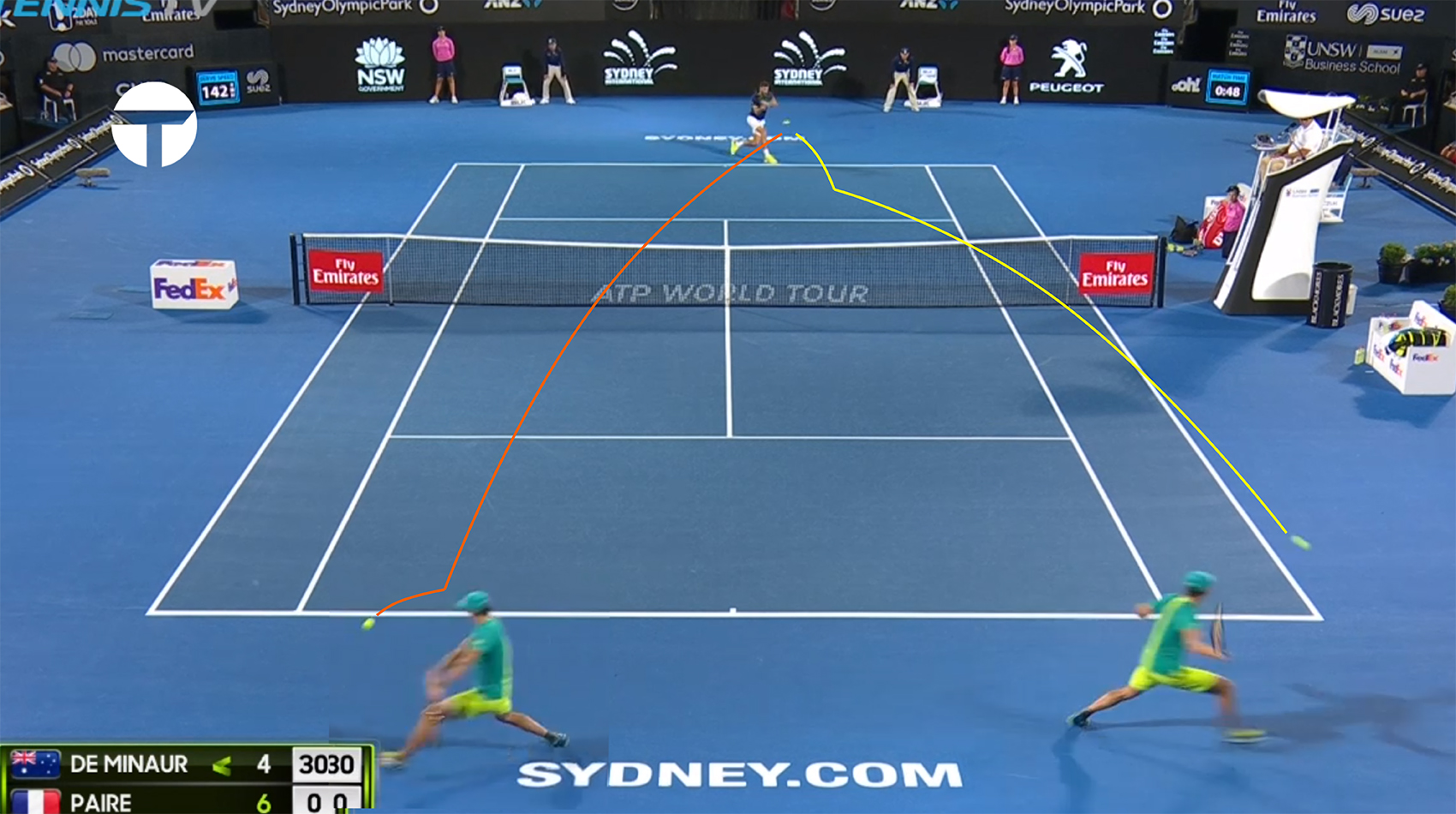
Alex takes his running forehand up the line in much like he did against Mmoh in the previous example. This time however his original hitting position is worse, and Paire’s backhand is much better than Mmoh’s. Benoit steps up and takes the ball early, driving it cross-court and keep Alex both on the run and on defense. Again, stop and look at where Alex is – well behind the baseline, on the stretch. Hardly the place dreams are made of.
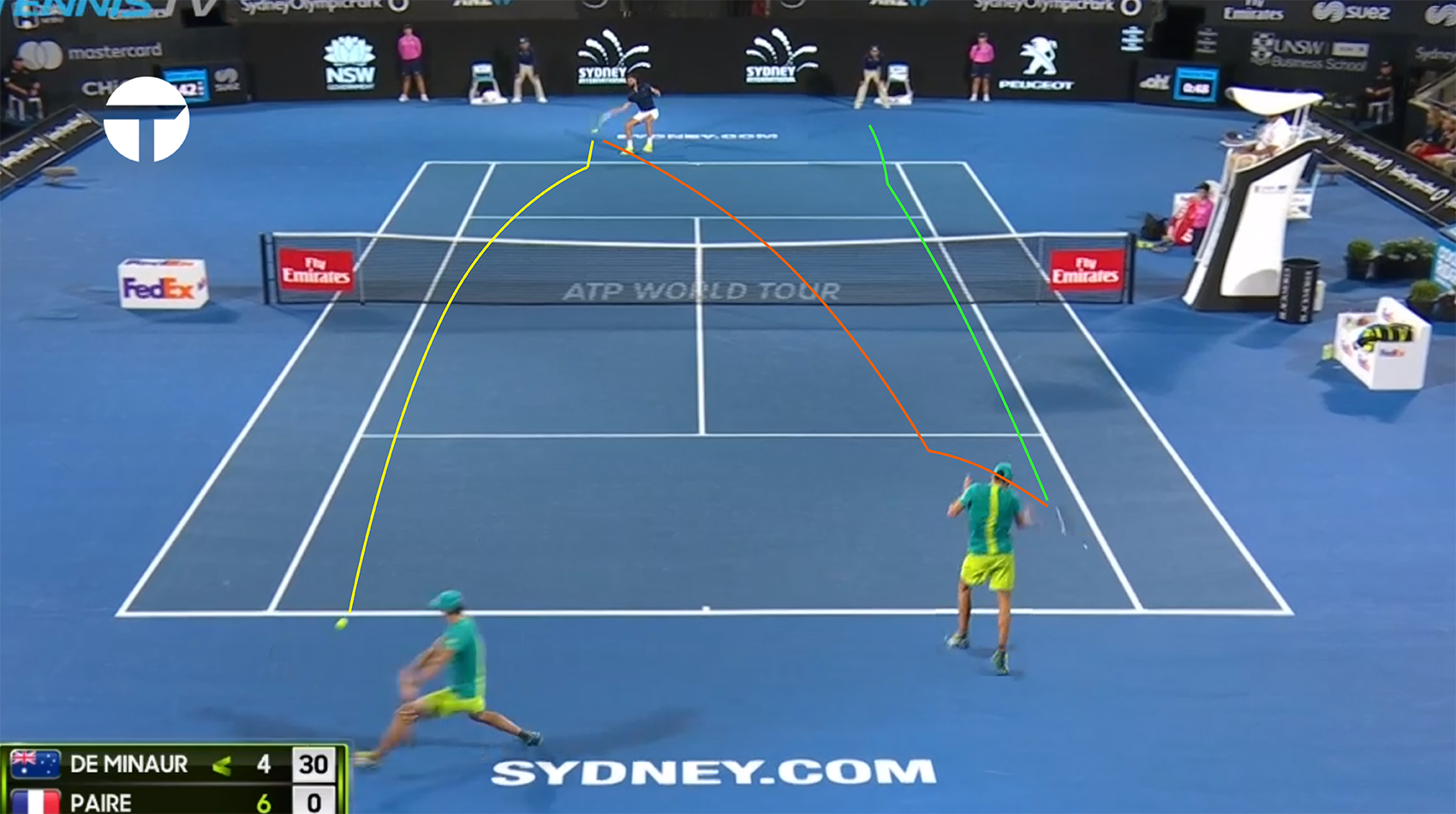
De Minaur knows his own strengths. An attempted cross-court ball from this position likely wouldn’t have much stick on it. Recall the more pushing motion de Minaur has? So he pushes the ball up the line, the direction he can get a little better contact and more depth on. Also recall that Benoit Paire’s forehand is a little spotty? Suddenly Benoit is on his back foot. He’s hitting his weakest shot from a defensive position, and de Minaur doesn’t waste a moment. Where Benoit Paire couldn’t break de Minaur down despite back-to-back offensive opportunities, de Minaur needs only one. He steps up, takes Paire’s cross-court ball early and drives a forehand down the line for a winner.
If we were to map out the distance run by each player during this point, Alex runs significantly further than his opponent. This was the price de Minaur was willing to pay to create a fluid – to break down normal patterns and make the tennis about the thing that he does well.
Conclusion
It would be both tempting and easy to look at these instances and simply say that Alex de Minaur plays good defense. Certainly he does, but to write this off as impromptu, scrambling, defensive improvisation would be a mistake. If you watch him play, these patterns emerge over and over again against a variety of opponents. The hook is baited with a backhand hung in the middle of the court, inviting attack into the forehand corner. Then, the trap is sprung with a running forehand that completely shifts control of the point.
Most top players build their play around their forehand. Some players, like Jack Sock, are willing to do a lot of running around their backhand to make forehand opportunities. Others, like Roger Federer, will use depth and angles to create their forehand chances. Alex de Minaur turns potential weakness to strength. The young Australian has a knack for luring opponents into overextending themselves before capitalizing on slightly optimistic positioning.
De Minaur is only 18 – his game will continue to develop. Although he has clear opportunities to make improvements with his backhand and second serve, his sense of risk management is simply superb. Alex de Minaur is certainly among the tactically brightest of the up-and-coming generation. Lacking the firepower of Chung and Zverev, de Minaur is problem solving at a level beyond his years. Whether or not he can consolidate his early results from the year and carve out a place for himself in the top 100 or top 50 remains to be seen, but it’s a good bet we’ll be seeing the Aussie fighter for years to come.
Like what you’ve read? Share with your tennis friends through any of the social media links below!

